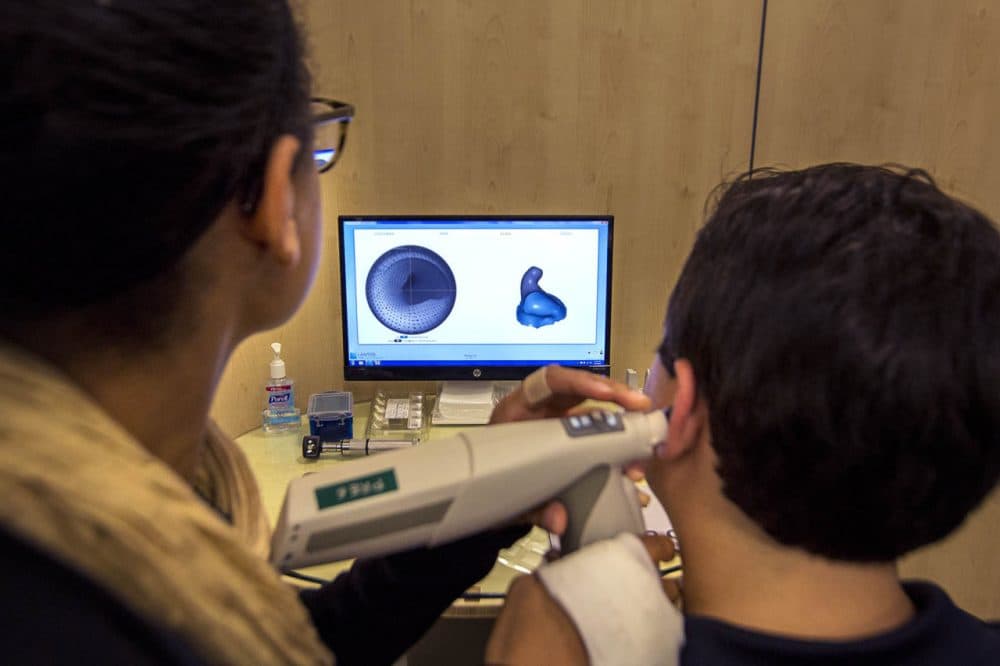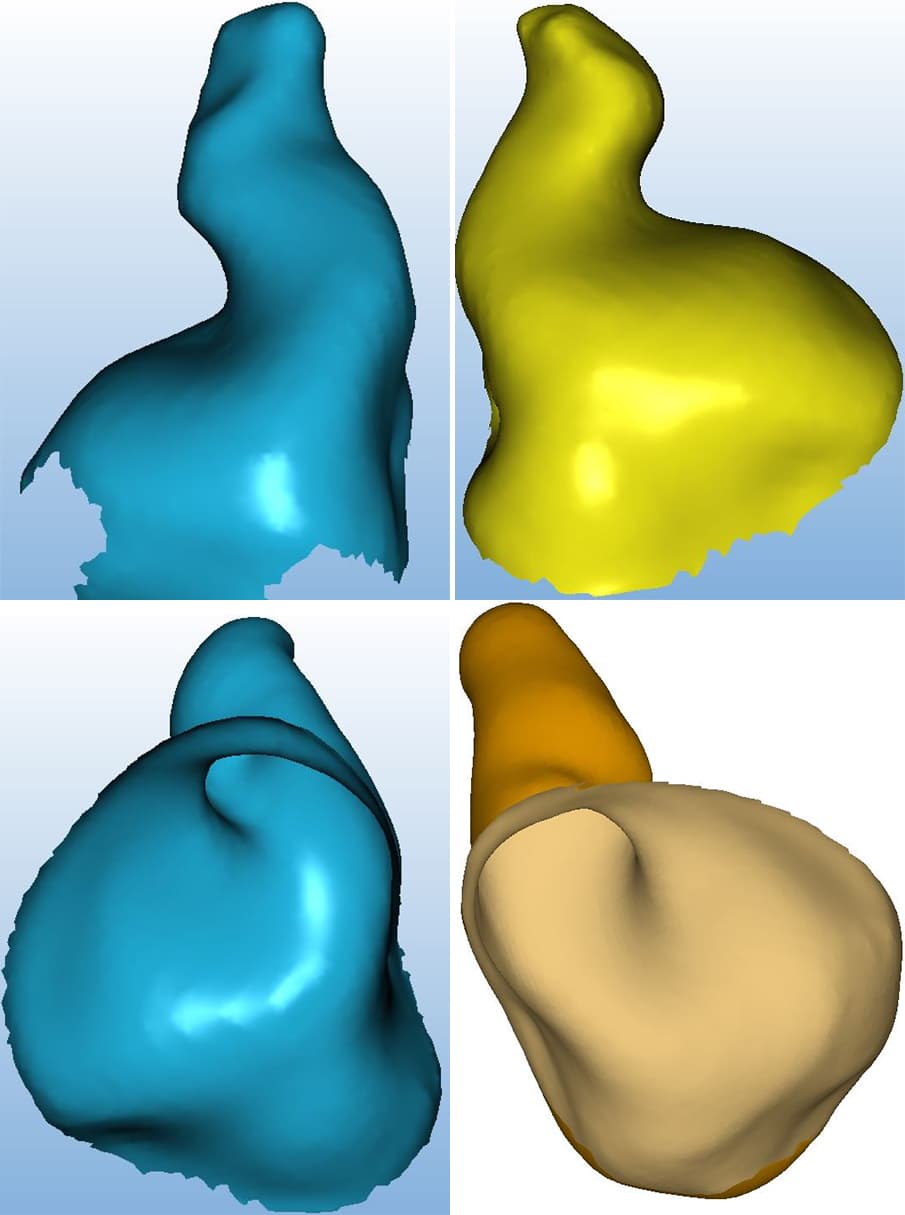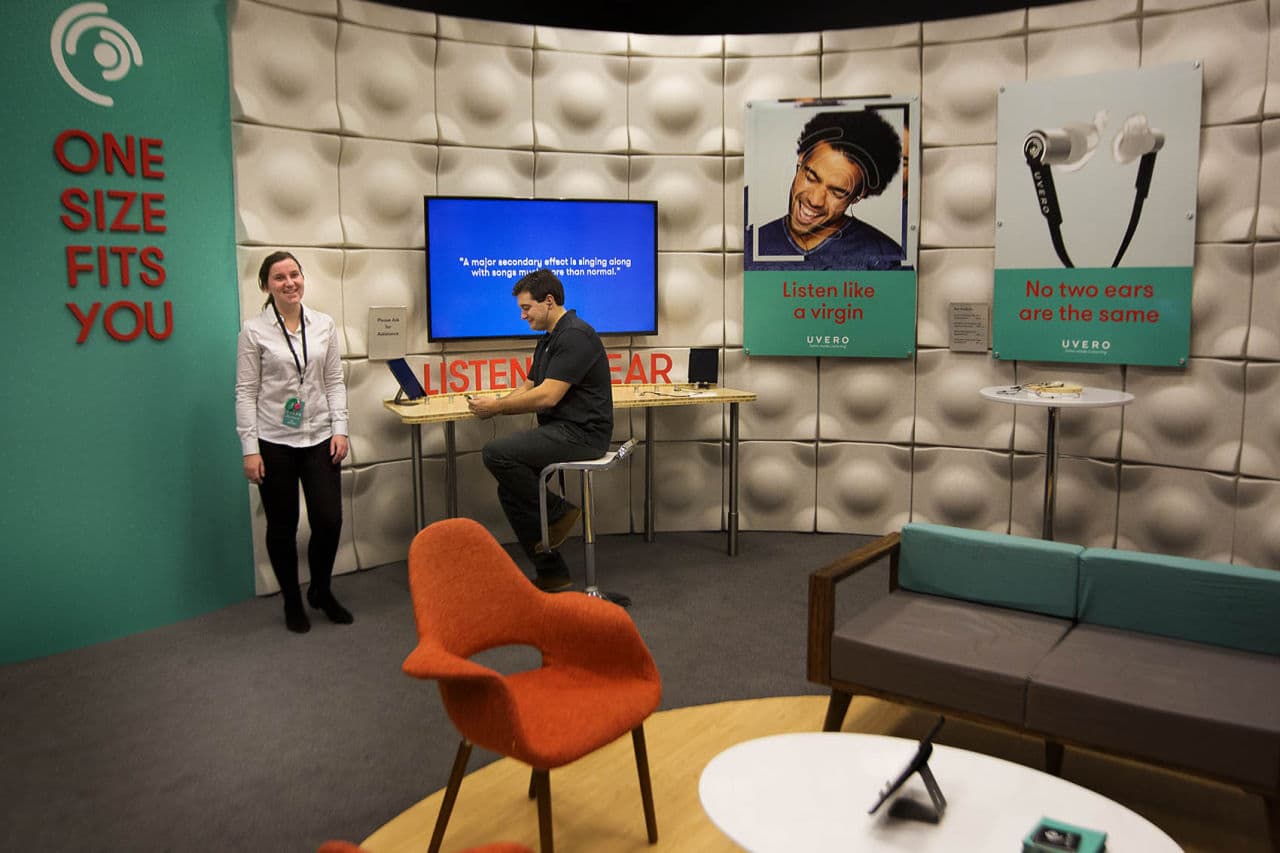Advertisement
For Custom Earbuds, Medical Imaging Technology Is Coming To A Mall Near You
Resume
My second grade teacher, Mrs. Marsh, would be disappointed in me. I’m putting something into my ear, and it’s not my elbow.
"It’s a water balloon," says Brian Fligor, an audiologist with the Wakefield company Lantos Technologies.
He’s holding an electric tool, the shape of a drill. But instead of a drill bit, there’s a deflated membrane. Fligor sticks it into my ear.
"I’m gonna inflate," he says, and I can hear an electric whir. "That sound is the motor dispensing [dyed liquid] medium into that membrane that’s conformed to your ear canal."

Fligor is filling my ear canal with a high-tech water balloon. It feels weird, but not uncomfortable, even as the device extends a tiny camera into the fluid.
"So we’re through the first bend of your ear canal, we’re getting through the second bend of your ear canal," Fligor says, and then: "Scan’s done! Scope is retracting out of your ear."
He's done in about 90 seconds, and then he scans my left ear. Each scan has collected more than 100,000 data points, and the computer stitches them into three dimensional maps on the screen.
"In fact it is very neat, you’ve got a bit of a corkscrew," Fligor says as he casts his trained eye on the rendering of my right ear.
Then he looks at my left one. "This ear’s very different from your right ear," he says excitedly.
So much for my budding career as an ear canal model.
"Is this the weirdest ear I’ve ever seen?" Fligor asks. He shakes his head and laughs. "I’ve seen some weird ears!"
Imaging technology has been revolutionizing medicine. Darshana Zaveri thinks the Lantos scanner is going to revolutionize the market for in-ear products. Zaveri is a partner at Catalyst Health Ventures, an investment firm in Braintree. She invested in Lantos because she says this technology answers a lot of people’s complaints about ear products.
"You hear a lot of buzzing, noises and feedback," Zaveri says of the common complaint about hearing aids.
And then there are the in-ear earphones that fall out during exercise or fit one ear better than the other. "You have to pump up the volume to get clarity in your music," Zaveri says. "So all the complaints that people have around ear products are related to the fit."

Zaveri sees lots of potential applications for this technology, even outside of the ear: like mapping keyholes and fitting prostheses. Even so, the technology was first developed with hearing aids in mind at MIT with funding from Siemens Healthcare. The German tech giant never did anything with it. Lantos licensed the ear-mapping technology and uses 3-D printing to fashion silicone into custom-fit earphones.
Going first to the consumer market makes Lantos pretty unique, says Chris Coburn, vice president of innovation at Partners HealthCare in Boston. He says it's more common for consumer technologies to make their way into medical devices.
"Technologies have grown up adjacent to each other between health care and general consumer for probably decades, if not centuries," Coburn says. "But with the crossover long established from consumer to health care, so far, going from health care to consumer would be rare."
Still, Coburn thinks that could change as the market for wearable technology grows, bringing tech in closer contact with the body.

So where can you get your hands this ear-mapping technology from MIT and Siemens Healthcare? You’ll find it at Burlington Mall across from Spencer Gifts. Lantos’ Fligor says his company’s new store is selling the custom-fit earphones under the brand name Uvero.
"The earpiece, being that it’s a snug fit to your ear, means that the lower pitches, the bass, is actually trapped inside," Fligor says. "And instead of it leaking out and you cranking up the music so that you can get that bass back, it’s staying right in there. So it’s a very warm earphone also."
Fligor says the tailor-made earphones can help prevent hearing damage.
Although, they could do some damage to your wallet. Retail price: $269.
That might be one reason it’s hard for medical technologies to migrate to the consumer market. In health care, an insurance company might not blink at that price.
At the mall, it’s out-of-pocket. The customer better see -- and hear — the value.
This segment aired on December 17, 2015.
